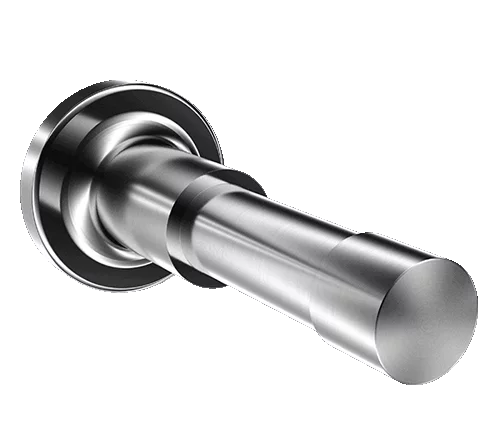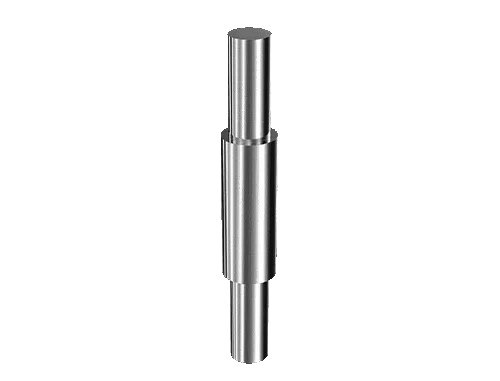Shandong Qilu lndustrial Co.,Ltd.
Top Reasons Why Cheap Shaft Forging is Gaining Popularity
Introduction

In today’s competitive industrial landscape, the demand for cost-effective yet high-quality solutions has propelled cheap shaft forging into the spotlight. This manufacturing process combines affordability with durability, making it increasingly preferred across various sectors. This blog explores in-depth the top reasons why cheap shaft forging is gaining prominence and examines its benefits, applications, and environmental advantages.
Benefits of Cheap Shaft Forging
Cost Efficiency
One of the primary advantages of cheap shaft forging is its remarkable cost efficiency. Unlike machining, which often involves significant material wastage due to subtractive processes, forging utilizes raw materials more effectively. The ability to shape metal under high pressure allows manufacturers to produce parts with minimal material loss. This efficiency not only reduces material costs but also lowers energy consumption per unit produced, contributing to overall cost savings.
Strength and Durability
Forged shafts are renowned for their superior mechanical properties, including high strength and durability. The forging process refines the grain structure of metals, aligning them to follow the contours of the component shape. This alignment enhances the mechanical properties of the shaft, improving its resistance to impact, fatigue, and wear. As a result, forged shafts exhibit greater reliability and longer service life compared to shafts made through other manufacturing methods.
Design Flexibility
Another compelling aspect of cheap shaft forging is its flexibility in design. Unlike casting, which is limited by mold complexity and dimensional constraints, forging allows for the creation of intricate shapes and custom geometries. Manufacturers can tailor shaft designs to meet specific performance requirements, optimizing strength-to-weight ratios and enhancing overall product performance. This adaptability makes forged shafts suitable for a wide range of applications across diverse industries.
Comparison with Machining and Casting
| Attribute | Forging | Machining | Casting |
|---|---|---|---|
| Material Utilization | High | Moderate | Low |
| Mechanical Properties | Excellent | Good | Fair |
| Complexity | Intricate shapes | Limited | Limited |
| Cost | Moderate | High | Low |
Environmental Sustainability
Cheap shaft forging aligns with sustainability goals by minimizing environmental impact throughout its lifecycle. The process generates less waste compared to machining and casting, contributing to reduced material scrap and lower energy consumption. The efficient use of resources and reduced emissions make forging an environmentally responsible choice for manufacturers looking to enhance their sustainability credentials.
Challenges in Cheap Shaft Forging
While cheap shaft forging offers numerous advantages, it also presents certain challenges that manufacturers need to address for optimal results:
Complex Tooling and Setup
Forging requires specialized tooling and equipment to exert high pressure and shape metals effectively. The initial investment in forging dies and equipment can be substantial, particularly for custom or complex designs. Manufacturers must carefully plan tooling layouts and setup processes to minimize costs and ensure consistent quality throughout production.
Material Selection and Testing
Choosing the right material is crucial in cheap shaft forging to achieve desired mechanical properties and performance characteristics. Variations in material composition and quality can affect the forging process and final product integrity. Rigorous material testing and quality control measures are necessary to verify material properties and ensure compliance with industry standards and specifications.
Design Optimization for Forging
Designing for forging involves considerations such as draft angles, fillet radii, and material flow during deformation. Complex geometries or intricate features may require multiple forging operations or secondary machining to achieve final specifications. Manufacturers must collaborate closely with design engineers to optimize part designs for forging, balancing functional requirements with manufacturing feasibility.
Heat Treatment and Surface Finish
Post-forging processes like heat treatment and surface finishing are critical to achieving desired material properties and surface quality. Heat treatment processes such as quenching and tempering help refine grain structures and enhance mechanical properties, while surface treatments like shot blasting or polishing improve surface finish and corrosion resistance. Effective process control and monitoring are essential to ensure consistent part quality and performance.
Applications and Industries

Forged shafts find extensive application in critical industries such as automotive, aerospace, oil and gas, and renewable energy. In automotive applications, forged crankshafts and drive shafts withstand high torque and dynamic loads, enhancing vehicle performance and fuel efficiency. In aerospace, forged shafts are integral to propulsion systems, ensuring reliability and safety in demanding flight conditions. The robust nature of forged shafts also supports their use in heavy machinery and industrial equipment, where durability and performance are paramount.
Conclusion
The growing popularity of cheap shaft forging can be attributed to its cost efficiency, superior mechanical properties, design flexibility, and environmental sustainability. As industries strive for operational excellence and sustainable practices, forged shafts emerge as a preferred choice for optimizing performance and reducing lifecycle costs. By leveraging the advantages of forging technology, manufacturers can achieve competitive advantages in today’s dynamic marketplace.
FAQ
Q: How does forging contribute to cost savings?
A: Forging reduces material waste and machining time, resulting in lower production costs per unit compared to machining or casting.
Q: What industries benefit the most from cheap shaft forging?
A: Industries such as automotive, aerospace, and heavy machinery rely on forged shafts for their durability and performance under demanding conditions.
Q: Is forging environmentally friendly?
A: Yes, forging consumes less energy and produces less waste compared to other manufacturing processes, making it a sustainable choice for environmentally conscious industries.
